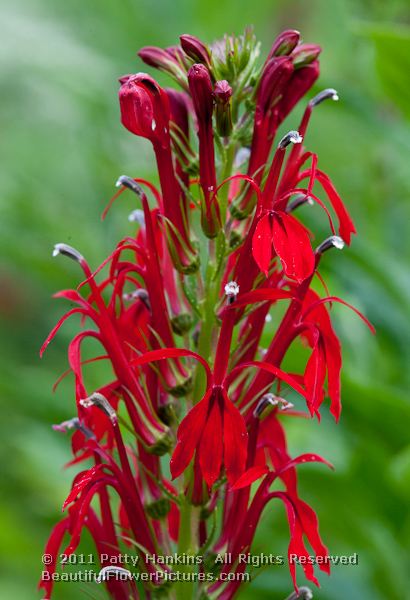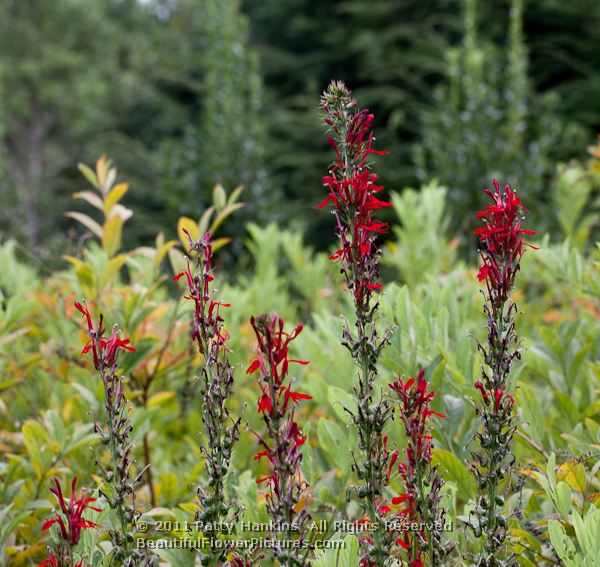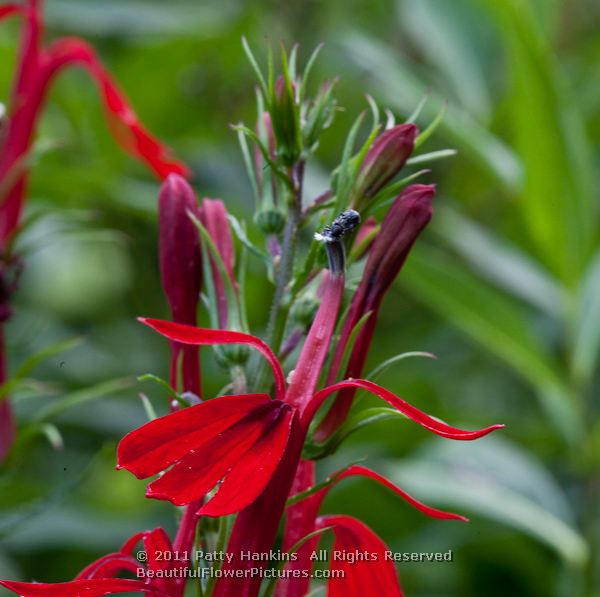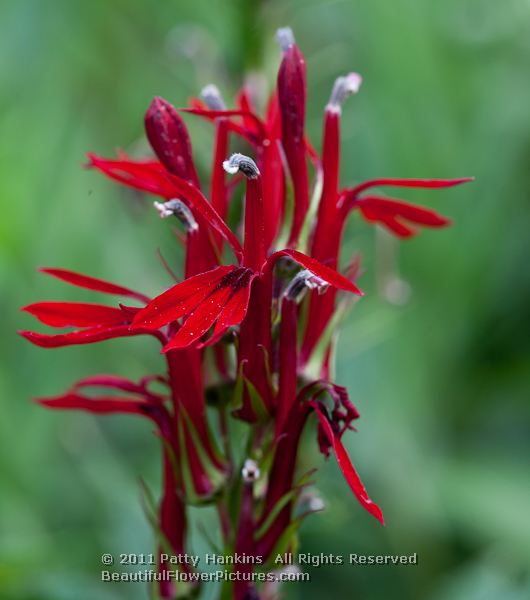© 2011 Patty Hankins
Once you’ve seen an incredible bright red cardinal flower you’ll never forget the amazing color of this wonderful wildflower. I’ve never seen any other flower that consistently has this incredible color.
Cardinal Flowers (lobelia cardinalis) is the most well known member of the Campanulaceae (Bellflower) family. They are native to most of the United States and Canada, with the exception of the Pacific Northwest. Common in many places, it is listed as threatened in Florida and vulnerable in New York. Cardinal flower grow up to 6 feet tall – with a single spike of red flowers. Each flower has three lower petals and two upper petals that join as a tube at the base.
© 2011 Patty Hankins
The showy red flowers attract hummingbirds. Every time I have photographed cardinal flowers in bloom, there have been hummingbirds in the area. Not only are the birds attracted to the bright red color, but the shape of the flower – a long tube with a pool of nectar – is perfect for the long-beaked hummingbirds to pollinate.
© 2011 Patty Hankins
Many people assume that the cardinal flowers got their name as a reference to the birds. In reality, they were named cardinal flowers since the color of the flowers is the same color as the vestments of the Cardinals in the Roman Catholic Church.
In addition to being a strikingly beautiful plant, Cardinal Flowers were used medicinally by numerous Native American tribes. In various forms, it was used as a remedy for pain, headaches, worms, colds, fevers, stomach troubles, syphilis, typhoid and cramps. It was also used to counteract witchcraft and as both a love and anti-divorce potion.The Jemez tribe used the flowers as part of their ceremonial rain dance.
Online sites with more information about Cardinal Flowers include
Kemper Center for Home Gardening





